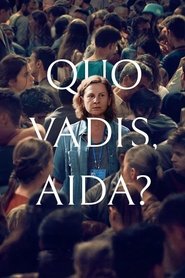Despite the film implying the primacy of speech and language over the reliability of images, it is a single look that tells Aida what is really going on. She holds the gaze of a coach driver, and we—like Aida—suddenly realise why his bus is empty. Or, more accurately, we knew all along; we just no longer can fool ourselves.
It's telling that there is no crusading press corp in Quo Vadis, Aida, save for the camera that follows Mladić around. Sensitive to his portrayal and the postmodern 'optics' of the situation, General Mladić directs him: film this, not that; ensure this is in the background and so on. Obtaining the B-roll as well at one point, therefore ensuring an elegant narrative.
At one point, the camp doctor speaks candidly to the Bosnian camera: "Can you tell me what you're doing here?" he replies: "You know what is going on here." He could be talking to the world, which would make the camera the audience, once touching again on this film's engagement with ideas about 'the camera' and 'the audience'.
Everyone will know how this story ends, yet we still have a chance to pretend that everything will work out okay.
Synopsis: Bosnia, July 1995. Aida is a translator for the UN in the small town of Srebrenica. When the Serbian army takes over the town, her family is among the thousands of citizens looking for shelter in the UN camp. As an insider to the negotiations Aida has access to crucial information that she needs to interpret. What is at the horizon for her family and people – rescue or death? Which move should she take?

